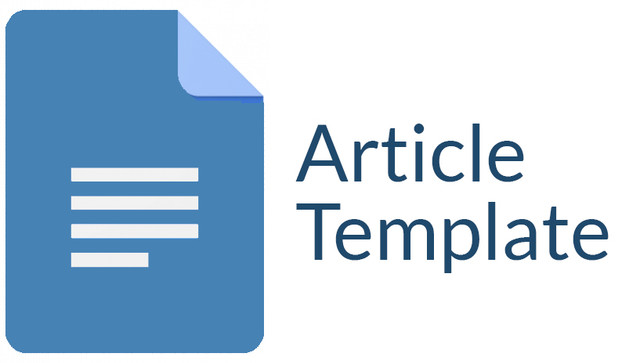Analysis of Students' Cognitive Ability in Solving Physics Problems on Parabolic Motion Material for Class XI Science at MAN 3 Bojonegoro
DOI:
https://doi.org/10.30736/seaj.v4i2.549Abstract
This research is a survey research with quantitative descriptive data type carried out at MAN 3 Bojonegoro. The population in this study was all students of class XI IPA MAN 3 Bojonegoro with a total sample of 129 students who were divided into four classes. The background of the problem in this study is the low problem-solving ability of students in solving physics problems on parabolic motion material. The results showed that 73.13% of students were in the high category for the factual dimension and 67.24% of the students were in the high category for the conceptual dimension. Students still have difficulty in solving cognitive questions at the evaluation level (C5) and creating (C6) with 24% of respondents answering. On cognitive questions at the Application (C3) and Analysis (C4) levels, the success rate of answering students' questions correctly is at the level of 90% and 9 4 5%. This shows that learning in schools is by national education goals which put learning objectives on Parabolic Motion material at the C4 level. These results are expected to be a reference for Physics Teachers at MAN 3 Bojonegoro to improve the learning process in the realm of High Order Thinking.Downloads
References
Aida, Nur. (2017).Karakteristik Instrumen Penilaian Hasil Belajar Matematika Ranah Kognitif Yang Dikembangkan Mengacu Pada Model PISA. Suska Journal of Mathematics .Vol. 3, No. 2, 2017, Hal. 130 – 139.
Fathiah, Kaniawati, I., & Utari, S. (2017). Analisis Didaktik Pembelajaran yang Dapat Meningkatkan Korelasi antara Pemahaman Konsep dan Kemampuan Pemecahan Masalah Siswa SMA pada Materi Fluida Dinamis. Jurnal Penelitian & Pengembangan Pendidikan Fisika, 1(1), 111-117
Huda, N., & Sinaga, E. L. (2012). Analisis Kemampuan Berdasarkan Ranah Kognitif Siswa Akselerasi Menyelesaikan Soal Materi Lingkaran di SMPN 7 Kota Jambi. Sainmatika (Jurnal Sains dan Matematika), 5(1), 54-75.
Khamzawi, S., Wiyono, K., & Zulherman. (2015). Pengembangan Multimedia Interaktif Berbasis Model Pembelajaran Problem Based Learning pada Mata Pelajaran Fisika Pokok Bahasan Fluida Dinamis untuk SMA Kelas XI. Jurnal Inovasi dan Pembelajaran Fisika, 2(1), 100-108
Khasanah, R.,Sarwi & Masturi. (2015). Implementasi Model Project Based Learning Berbantuan LKS untuk Meningkatkan Penguasaan Konsep Fisika Dan Performance Siswa. Unnes Physics Education Journal (UPEJ), 4(2), 83-89
Naufalina, R. T., Suwarma, I. R., & Sutiadi, A. (2016). Profil Kemampuan Kognitif Siswa MA dalam Pembelajaran Fisika Menggunakan Teknik Pembelajaran ‘Take Away’. SNF2016-EER. 5, pp.45-50. Jakarta: Prosiding Seminar Nasional Fisika (E-Journal).
PISA Result. (2018). PISA Result 2018. (online). (https://www.oecd.org/pisa/pisa-2015-results-in-focus.pdf).
Rosa, Friska Octavia. (2015). Analisis kemampuan Siswa Kelas X Pada Ranah Kognitif, Afektif dan Psikomotorik. Jurnal Fisika dan Pendidikan Fisika, OMEGA. Vol 1 No. 2.
Siswanto, Asriyadin, Yusiran, & Subali, B. (2017). Inquiry by Design Argumentation Activity: Melatihkan Kemampuan Kognitif pada Pembelajaran Fisika. Gravity: Jurnal Ilmiah Penelitian dan Pembelajaran Fisika, 3(1), 51-65
Suhaida, Dada. (2018). Analisis Kemampuan Siswa Dalam Pembelajaran Pendidikan Kewarganegaraan di Sekolah Menengah Pertama Negeri 2 Siantan Kabupaten Mempawah. Jurnal Pendidikan Kewarganegaraan, Vol 2, No. 2.
Syaiful, Rochman. (2018). Analisis High Order Thinking Skills (HOTS) Taksonomi Menganalisis Pemecahan Fisika. Science and Physics Education Journal (SPEJ), Vol 1, No 1.
Downloads
Additional Files
Published
How to Cite
Issue
Section
License
Authors who publish with this journal agree to the following terms:
- Authors retain copyright and grant the journal right of first publication with the work simultaneously licensed under a Creative Commons Attribution-ShareAlike 4.0 International License that allows others to share the work with an acknowledgment of the work's authorship and initial publication in this journal.
- Authors are able to enter into separate, additional contractual arrangements for the non-exclusive distribution of the journal's published version of the work (e.g., post it to an institutional repository or publish it in a book), with an acknowledgment of its initial publication in this journal.
- Authors are permitted and encouraged to post their work online (e.g., in institutional repositories or on their website) prior to and during the submission process, as it can lead to productive exchanges, as well as earlier and greater citation of published work (See The Effect of Open Access).

This work is licensed under a Creative Commons Attribution-ShareAlike 4.0 International License.










